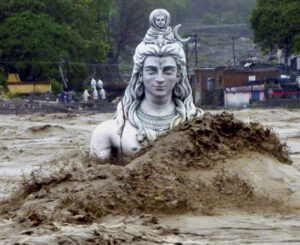
The recent devastation at Kedarnath is a case of what happens when pilgrimages are no longer green and do not follow rules. Kedarnath, in the Himalayas, is open from the end of April to November, when winter begins. Only the priest and his family are permitted to stay at Kedarnath. The temple is not directly accessible by road and has to be reached by a 14 kilometre uphill trek from Gaurikund. However, ponies are available for those who are unable to walk. The pilgrim may not spend more than one night. If he is unable to walk back the same day, he may spend the night wrapped in a blanket under the stars or under a tent. Unfortunately, these rules were flouted as shops and hotels moved in to provide amenities for pilgrims. A sacred tīrtha on the Mandakini river, which feeds the Ganga, became a small town. And when the river rose in anger, nearly 16,000 people died.
Yet there is magic in Kedarnath. Eyewitnesses observed that a large rock was carried up to the temple by the flood waters and settled at the rear side of the Kedarnath Temple, thus causing obstruction to the debris and diverting the flow of the river to the side of the temple to avoid any damage. Kedarnath was the worst affected area during the 2013 floods that hit North India. The surrounding areas, Kedarnath town and the temple complex suffered extensive damage, but the temple and the sacred sanctum remained unharmed.


